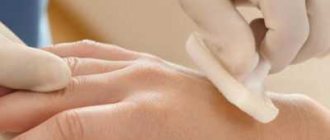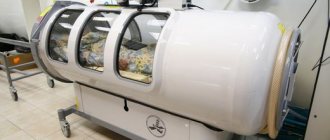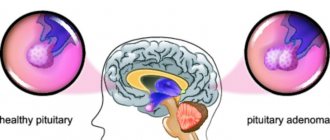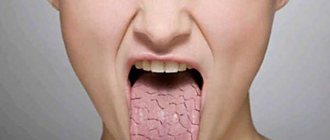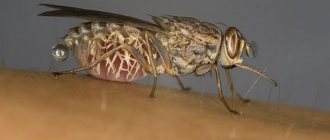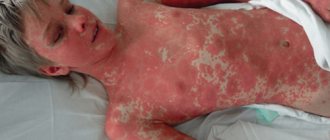The thyroid gland is an internal secretion organ, one of the most important regulators of metabolic processes occurring in the human body. It is very sensitive to external and internal influences. Disruption of its work immediately affects the condition of the integumentary tissues, weight, cardiac activity, the ability to become pregnant and bear a child; it can be seen “from afar”, looking at changes in behavioral reactions and speed of thinking.
20-30% of all thyroid diseases are a disease called “autoimmune thyroiditis.” Autoimmune thyroiditis of the thyroid gland is an acute or chronic inflammation of the organ tissue associated with the destruction of its cells by the body’s own immune system. The disease is more common in women; It proceeds for a long time without visible symptoms, so it can only be suspected during a routine ultrasound and determination of antibodies to gland peroxidase in the blood. Treatment is selected by an endocrinologist, focusing on the stage of the process. Autoimmune thyroiditis can be cured either completely or its activity can be controlled with constant medication: it all depends on the type of disease. The disease has a benign course.
Explanation of the name
The word “autoimmune” refers to a situation where inflammation is caused by one’s own immune system, attacking an organ (in this case, the thyroid gland). Why is this happening?
All cells, both microbial and “native” to the body, must “introduce themselves.” To do this, they display an “identification mark” on their surface in the form of special, specific proteins. They decided to call such proteins “antigens,” and other proteins produced by the immune system to eliminate them were called “antibodies.” Immune cells located in blood vessels every second approach each cell and check it for danger to the body precisely according to such autoantigens, checking them against their “list”. As soon as the immune system stops doing this normally (due to a violation of the quality of lymphocytes or a decrease in the number of its “army”), tumors appear, because during the process of division, “wrong” (atypical) cells appear in any tissue. But that’s not what we’re talking about now.
Even before the birth of a person, lymphocytes undergo specific training, as a result of which they receive a “list” of antigens of their cells, past which they pass and do not produce antibodies. But not all our organs (or their parts) normally have “allowed” antigens. In this case, the body surrounds them with a barrier of special cells that prevent lymphocytes from approaching and checking the “identification marks”. Such a barrier surrounds: the thyroid gland, lens, male genital organs; such protection is built around the child growing in the uterine cavity.
When the barrier around the thyroid gland is destroyed—temporarily or permanently—autoimmune thyroiditis occurs. The genes that make lymphocytes more aggressive are to blame for this. Women get sick more often, since estrogens, unlike male hormones, affect the immune system.
Classification of the disease
The category of “autoimmune thyroiditis” includes several diseases. This:
- Chronic autoimmune thyroiditis or Hashimoto's disease. This is what is often called simply “autoimmune thyroiditis” and this is what we will consider as a disease with classical stages. This is a disease that has a genetic cause. Its course is chronic, but benign. To maintain a normal quality of life, you will have to constantly take hormone replacement therapy.
Hashimoto's disease is also called lymphomatous goiter, since the gland becomes enlarged due to swelling resulting from a massive attack of its tissue by lymphocytes. There is often a combination of this pathology with other autoimmune diseases, if not in this person, then in this family. Thus, Hashimoto's thyroiditis is often combined with type I diabetes mellitus, rheumatoid arthritis, damage to the lining cells of the stomach, autoimmune inflammation of the liver, and vitiligo.
- Postpartum thyroiditis: Inflammation of the thyroid gland develops around 14 weeks postpartum. It is associated with a special reaction of the immune system: during pregnancy it has to be suppressed so as not to destroy the child (the fetus is foreign in its essence), and after childbirth it can be excessively reactivated.
- A painless form of autoimmune thyroiditis. This is a disease with an unknown cause, but its development mechanism is identical to postpartum.
- Cytokine-induced form. It develops when the thyroid gland is “bombarded” by substances-cytokines, which appear in the body in large quantities, when long-term treatment with interferon drugs is carried out - injectable “Laferon”, “Viferon” (this is how viral hepatitis C is usually treated before it results in cirrhosis, some blood diseases) .
Depending on the degree of enlargement of the gland, there is another classification of autoimmune thyroiditis. Based on this, the disease may be:
- Latent: the thyroid gland may be slightly enlarged or normal. The level of hormones and, accordingly, the function of the gland are not changed.
- Hypertrophic: the size of the organ is increased either completely (diffuse form), or in one/several places (nodular thyroiditis).
- Atrophic: the size is reduced, the amount of hormones produced is reduced. This is hypothyroidism due to autoimmune thyroiditis.
Prevention
No specific preventive measures are required. To prevent complications from autoimmune thyroiditis, you need to undergo regular medical examinations. In addition, you should:
- eat well;
- strengthen immunity;
- control the psycho-emotional state;
- promptly treat infectious and viral diseases;
- maintain body weight within normal limits.
We must remember that conditions that have pronounced clinical symptoms pose a threat to life.
Causes of pathology
In order for any of the autoimmune thyroiditis to develop, a defect in the genes encoding the activity of the immune system alone is not enough. The triggering factor that a person considers to be the cause of his illness may be:
- past influenza, less often - other respiratory viral diseases, as well as mumps and measles;
- taking large amounts of iodine;
- chronic infection in the body: chronic tonsillitis, untreated caries, chronic sinusitis;
- living in poor environmental conditions, when a lot of chlorine or fluorine enters the body;
- deficiency of selenium in the soil in the region of residence
- ionizing radiation;
- psycho-emotional stress.
Causes
An enlarged thyroid gland or the presence of nodules can be determined independently
Hereditary condition alone will not be enough for the formation of the disease.
In order to provoke the development of autoimmune thyroiditis, exposure to the adverse factors listed below will be required:
- history of viral respiratory diseases;
- the presence of constant sources of infection and infectious foci, for example, diseased tonsils, caries, chronic rhinitis of a bacterial nature and other diseases;
- unfavorable environmental circumstances: increased background radiation, iodine deficiency, the presence of toxins, especially chlorine and fluorine compounds, which provoke excessive aggressiveness of T-lymphocytes;
- self-medication with hormonal and iodine preparations, or their long-term use;
- excessive passion for tanning, especially during hours of active infrared radiation;
- severe stressful situations.
Scientists have identified a connection between a person’s immune status and his emotional sphere.
It manifests itself as follows:
- Stressful situations and depression provoke the production of certain hormones;
- These biologically active substances lead the body to attack itself;
- The antibodies involved in this attack use the thyroid gland as a target.
As a result, autoimmune thyroiditis develops, the psychosomatics of which are initially expressed in frequent depressive states. That is why so often people suffering from this pathology are indifferent to what is happening in the world around them, often have a bad mood and low physical activity.
Interesting: Quite often it is a poor psychological, rather than physical, condition that prompts patients to seek medical help for this pathology.
Stages and symptoms
Hashimoto's thyroiditis is divided into several stages. One smoothly transitions into the other.
Euthyroid stage
Hashimoto's disease begins when immune cells begin to “see” thyroid cells, thyrocytes. These are foreign structures for them, so they decide to attack thyrocytes and, with the help of chemicals dissolved in the blood, call their fellows to themselves for this purpose. They attack thyrocytes, producing antibodies against them. There may be different numbers of the latter. If there are few of them, a few gland cells die, the euthyroid phase of the disease is maintained, the levels of all hormones are not changed, there are symptoms only due to the enlargement of the gland:
- the thyroid gland becomes visible;
- it can be palpated, and determinations can be made on it;
- it becomes difficult (like a “lump in the throat”) to swallow, especially solid food;
- a person gets tired when doing less work than before.
Subclinical stage
The same symptoms of autoimmune thyroiditis are observed in the subclinical phase of the disease. At this time, the number of cells in the gland decreases, but those that should be at rest are included in the work. This happens due to thyroid-stimulating hormone (TSH).
Thyrotoxicosis
If there are too many thyroid-stimulated antibodies, a thyrotoxic phase develops. Its signs are as follows:
- fast fatiguability;
- irritability, tearfulness, anger;
- weakness;
- hot flashes;
- sweating;
- a palpable increase in heart rate;
- tendency to diarrhea;
- decreased sex drive;
- it is difficult to be in a hot climate;
- menstrual irregularities.
If the disease occurs in a child, at this stage what most often attracts attention is that he becomes very thin and does not gain weight, despite an increased appetite.
Hypothyroidism
When antibodies destroy a large volume of the working zone of the gland, the last phase of autoimmune thyroiditis occurs - hypothyroidism. Its signs are:
- weakness;
- depression, apathy;
- slow speech and reaction;
- weight gain with poor appetite;
- the skin becomes pale, swollen, yellowish and dense (does not fold);
- the face is puffy;
- constipation;
- a person freezes quickly;
- hair falls out more;
- hoarse voice;
- menstruation infrequent and scanty;
- brittle nails;
- joint pain.
In a child, hypothyroidism is manifested by weight gain, memory deterioration, he becomes more phlegmatic, and remembers material worse. If the disease develops at an early age, mental development lags significantly behind.
Postpartum thyroiditis
In this case, at 14 weeks after birth, symptoms of mild hyperthyroidism appear:
- fatigue;
- weight loss;
- weakness.
They can intensify up to the appearance of a feeling of heat, a feeling of a strong heartbeat, insomnia, rapid mood swings, and trembling limbs. By the end of 4 months after birth (about 5 weeks after the first signs appear), symptoms of hypothyroidism appear, which are often attributed to postpartum depression.
Silent thyroiditis
It is characterized by hyperthyroidism, which occurs in a mild form: slight irritability, sweating, increased heart rate. This is all attributed to overwork.
Cytokine-induced thyroiditis
Against the background of injection administration of "Alveron", "Viferon" or other interferons, symptoms of both increased and decreased thyroid function may occur. Usually they are expressed insignificantly.
Diagnostics
Ultrasound of the thyroid gland
Diagnosing AIT before decreased hormone concentrations begin to appear is not so easy. To make a diagnosis, the endocrinologist takes into account the symptoms and test results obtained during the diagnosis. If relatives have this disease, then this fact confirms that the person has autoimmune thyroiditis.
Test results indicating the disease:
- leukocytosis in the blood;
- an immunogram shows the presence of antibodies to thyroid hormones;
- a biochemical blood test shows changes in the content of thyroid hormones and TSH;
- Ultrasound helps determine the echogenicity of the parenchyma, the size of the gland, the presence of nodules or compactions;
- a fine-needle biopsy will allow you to select thyroid tissue for histological analysis; with autoimmune thyroiditis, a pathologically large accumulation of lymphocytes is detected in the tissues of the organ.
An important feature of making a reliable diagnosis is the simultaneous presence of the following indicators:
- increased level of antibodies to the thyroid parenchyma (AT-TPO);
- hypoechogenicity of the tissue structure;
- the presence of signs characteristic of low hypothyroidism.
If any of the above three signs is absent, then we can only talk about the probable presence of the disease, since the first two signs cannot reliably indicate the presence of AIT.
As a rule, therapy is prescribed when the disease enters the hypothyroid phase. This determines the fact that before the onset of this phase there is no urgent need to determine the diagnosis and prescribe appropriate therapy.
Changes detected by ultrasound examination
In addition to objective and laboratory data, there are also echo signs of thyroiditis, which consist of a decrease in the echogenicity of the thyroid gland and the development of pronounced changes that are diffuse in nature.
The result of an ultrasound examination of the thyroid gland
The photo shows that the thyroid gland affected by autoimmune thyroiditis is darker in color than a healthy one, and its structure is very heterogeneous - its tissue is sometimes darker and sometimes lighter in different places.
Quite often, ultrasound diagnostic specialists, along with the heterogeneity of the organ structure, detect darker lesions. However, they are not always real nodes.
This is what foci of pronounced inflammation look like on ultrasound. Their name is “pseudo-nodes”. In order to clarify the nature of these compactions that appear in the thyroid tissue during autoimmune thyroiditis, if their size is 10 millimeters or more, a biopsy is performed.
Histological examination of the sample taken will help answer the question of its origin. Such structures may turn out to be “pseudonodules” against the background of AIT, and benign colloid nodules, and malignant neoplasms.
Histological features
When examining a sample of thyroid tissue, the following histological signs of thyroiditis can be detected:
- Infiltration of immune elements into the tissue of an organ (lymphocytes penetrate them, saturating their structure). The predominant elements in this process are plasma cells. Infiltration can be of varying degrees of saturation, and is also divided into diffuse (a widespread process) and focal (lymphomaplasmocytic elements are localized in certain places).
- Growth of lymphoid follicles, which contain reproductive centers.
- The appearance of large cells of oxyphilic light epithelial tissue, called Hurthle or Ashkinasi cells. They are formed due to the intensification of most processes occurring in the thyroid gland. Ashkinazi cells exhibit powerful metabolic activity. However, their origin and development are not associated with the processes of destruction, dystrophy or oncogenesis in the affected thyroid gland. They are designed to enhance the natural processes for which the thyroid tissue is responsible and which suffer under the influence of the pathological process.
- Regenerative processes. In contrast to the lymphocytic infiltration that develops during autoimmune thyroiditis, the thyroid gland tries to recover and forms areas of healthy functional epithelial cells, which in some cases have a papillary appearance. These growths are benign. In general, autoimmune processes are characterized by manifestations of reparative regeneration, which has a clear tendency to increase the volume of interfollicular epithelial tissue.
- Fibrosis of thyroid tissue, in which a thickening of the network of argyrophilic fibers prone to collagenization occurs. The result of such processes may be the division of organ tissue into distinct lobular segments. Tissue fibrosis is more typical for diffuse autoimmune thyroiditis than for focal one.
Thyroid tissue sample taken from a patient with suspected autoimmune thyroiditis
Autoimmune thyroiditis and fertility
Autoimmune thyroiditis at the subclinical, euthyroid and thyrotoxic stages does not interfere with conception, which cannot be said about the stage of hypothyroidism, because thyroid hormones affect ovarian function. If adequate treatment with synthetic hormones is carried out at this stage, pregnancy will occur. At the same time, there is a danger of miscarriage, since antibodies to the gland, the production of which does not depend on the amount of L-thyroxine (or Eutirox) taken, negatively affects ovarian tissue. But the situation is corrected with progesterone replacement therapy, which will maintain pregnancy.
A woman with thyroiditis should be observed by an endocrinologist throughout the entire gestation period. In case of a hypothyroid state during this period, he must increase the dose of thyroxine (the need for thyroid hormones of two organisms - mother and child - increases by 40%). Otherwise, if a small amount of thyroid hormones remains in the mother’s body during pregnancy, the fetus may develop severe pathologies, sometimes incompatible with life. Or he will be born with congenital hypothyroidism, which amounts to severe mental retardation and metabolic disorders.
Hashimoto's disease - symptoms
Patients may be concerned about:
- fatigue;
- weakness;
- muscle pain;
- problems with concentration;
- feeling cold (while other people are warm);
- drowsiness;
- digestive problems;
- excessive menstrual bleeding;
- hoarseness for no apparent reason;
- swelling of the legs, face;
- skin problems (roughness and dryness of the skin).
Fatigue
Feeling cold
Possible mental symptoms of Hashimoto's disease:
- depression;
- mood swings;
- psychosis.
Patients also complain of slow physical and mental development, nervousness, irritability, difficulty concentrating, and related problems at school or work.
Hashimoto's disease is very often accompanied by periods of exacerbation and remission and can be asymptomatic for many years without affecting the functioning of the thyroid gland. Rarely causes an overactive thyroid gland and in most cases leads to hypothyroidism.
What is needed for diagnosis
If autoimmune thyroiditis is suspected, such a diagnosis is performed. A blood test is performed for hormones:
- T3 – general and free,
- T4 – general and free,
- TSH.
If TSH is elevated and T4 is normal, this is a subclinical stage, but if TSH is elevated and T4 levels decrease, this means that the first symptoms should already appear.
The diagnosis is established based on a combination of the following data:
- The level of antibodies to the thyroid enzyme - thyroid peroxidase (AT-TPO) in the analysis of venous blood is increased.
- Ultrasound of the thyroid gland determines its hypoechogenicity.
- Reduced concentrations of T3, T4, increased TSH levels.
Only one indicator does not allow such a diagnosis. Even an increase in AT-TPO only indicates that a person has a predisposition to autoimmune damage to the gland.
If the thyroiditis is nodular, a biopsy of each node is performed to visualize signs of thyroiditis, as well as to exclude cancer.
Kinds
AIT of the thyroid gland is of 3 types:
- Chronic AIT.
- Hypertrophic.
- Atrophic.
The chronic disease is an inflammation of the thyroid gland that is autoimmune in nature.
With hypertrophic thyroiditis, there is an enlargement of the gland and the appearance of nodules. Its functions are defined as normal or slightly reduced. With atrophic thyroiditis, the iron does not increase, functions are reduced.
Ultrasound of the thyroid gland can reveal the presence of nodes, their shape and structure.
Complications
Different stages of thyroiditis have different complications. Thus, the hyperthyroid stage can be complicated by arrhythmia, heart failure, and even provoke myocardial infarction.
Hypothyroidism can cause:
- infertility;
- recurrent miscarriage;
- congenital hypothyroidism in a newborn child;
- dementia;
- atherosclerosis;
- depression;
- myxedema, which looks like intolerance to the slightest cold, constant drowsiness. If in this state you administer sedatives, get severe stress, or get an infectious disease, you can provoke a hypothyroid coma.
Fortunately, this condition responds well to treatment and, if you take drugs in a dose adjusted to the level of hormones and AT-TPO, you can not feel the presence of the disease for a long time.
Diet for autoimmune thyroiditis
The diet should be normal in caloric content (energy value of at least 1500 kcal), and it is better if you calculate it according to Mary Chaumont: (weight * 25) minus 200 kcal.
The amount of protein should be increased to 3 g per kg of body weight, and saturated fats and easily digestible carbohydrates should be limited. You need to eat every 3 hours.
What you can eat:
- vegetable dishes;
- baked red fish;
- fish fat;
- liver: cod, pork, beef;
- pasta;
- dairy products;
- cheese;
- legumes;
- eggs;
- butter;
- porridge;
- bread.
Salted, fried, spicy and smoked foods, alcohol and seasonings are excluded. Water – no more than 1.5 l/day.
You need fasting - once a week or 10 days - days on juices and fruits.
Treatment
Treatment of autoimmune thyroiditis is completely medicinal and depends on the stage of the disease. It is prescribed at any age and does not stop even during pregnancy, if, of course, there are indications. Its goal is to maintain the level of thyroid hormones at the level of physiological values (their control is carried out once every 6 months, the first control - after 1.5-2 months).
In the euthyroid stage, treatment is not carried out.
The doctor decides how to treat the stage of thyrotoxicosis. Typically, thyreostatics, such as Mercazolil, are not prescribed. Treatment is carried out symptomatically: for tachycardia, beta-blockers are prescribed: Atenolol, Nebivolol, Anaprilin; for severe psycho-emotional excitability, sedatives are prescribed. If a thyrotoxic crisis occurs, therapy is carried out in a hospital with the help of injectable glucocorticoid hormones (Dexamethasone, Prednisolone). The same drugs are administered if autoimmune thyroiditis is combined with subacute thyroiditis, but treatment is carried out at home.
In the stage of hypothyroidism, synthetic T4 (thyroxine) called “L-thyroxine” or “Euthyrox” and, if there is a lack of triiodothyronine, its laboratory-created analogues are prescribed. The dosage of thyroxine for adults is 1.4-1.7 mcg/kg of weight, for children – up to 4 mcg/kg.
Thyroxine is prescribed to children if there is an increase in TSH and a normal or decreased T4 level, if the gland is enlarged by 30 percent or more of the age norm. If it is enlarged, its structure is heterogeneous, and AT-TPO is absent, iodine is prescribed in the form of potassium iodide at a dosage of 200 mcg/day.
When a diagnosis of autoimmune thyroiditis is made to a person living in an area with iodine deficiency, physiological doses of iodine are used: 100-200 mcg/day.
L-thyroxine is prescribed to pregnant women if TSH is more than 4 mU/l. If they only have AT-TPO and TSH is less than 2 mU/L, thyroxine is not used, but TSH levels are monitored every trimester. In the presence of AT-TPO and TSH 2-4 mU/l, L-thyroxine is needed in prophylactic doses.
If the thyroiditis is nodular, in which cancer cannot be excluded, or if the thyroid gland compresses the organs of the neck, significantly complicating breathing, surgical treatment is performed.
Disease prevention
It is impossible to prevent the transmission of a defective gene. But it is worth monitoring the function of your own thyroid gland, as planned (especially if there is a tendency to gain weight or, conversely, to become thin), once every 1 year, by donating blood for T4 and TSH. It is also optimal to undergo an ultrasound scan of the gland once every 1-2 years.
A routine examination for T4, AT-TPO and TSH is especially necessary in case of pregnancy. These tests are not included in the list of mandatory studies, so you need to ask for a referral yourself, from an endocrinologist.
Author:
Krivega Maria Salavatovna resuscitator
Hashimoto's disease - causes
The affected thyroid gland becomes unable to effectively synthesize hormones. Among the possible reasons for such “illogical”, auto-aggressive behavior of the body, doctors mention genetic factors, as well as situations related to the patient’s lifestyle, primarily emotional problems, stress, poor diet and lack of physical activity, stimulants, sleep disorders and others.
The occurrence of Hashimoto's disease can also be affected by pregnancy, miscarriage, failure to use contraception, or menopause, which are associated with changes in the body's hormonal balance.
There are two possible forms of the disease: the thyroid gland grows significantly and a goiter appears, or, conversely, it shrinks and degenerates.

